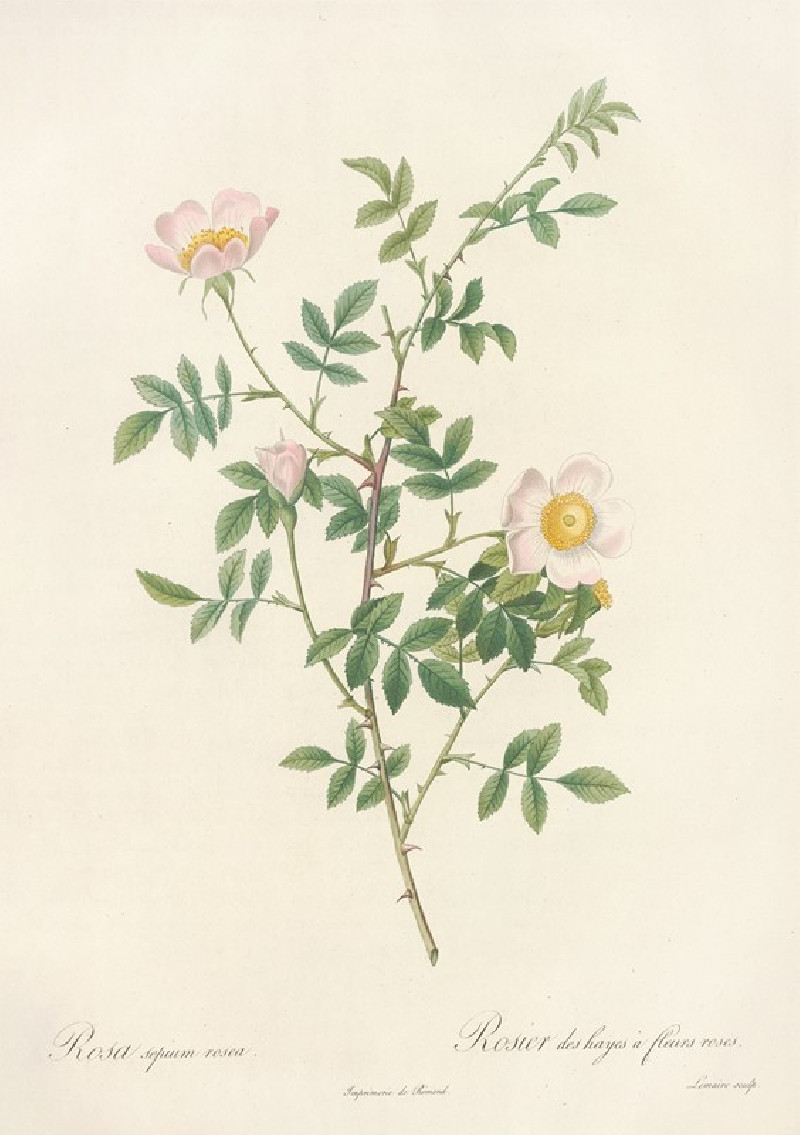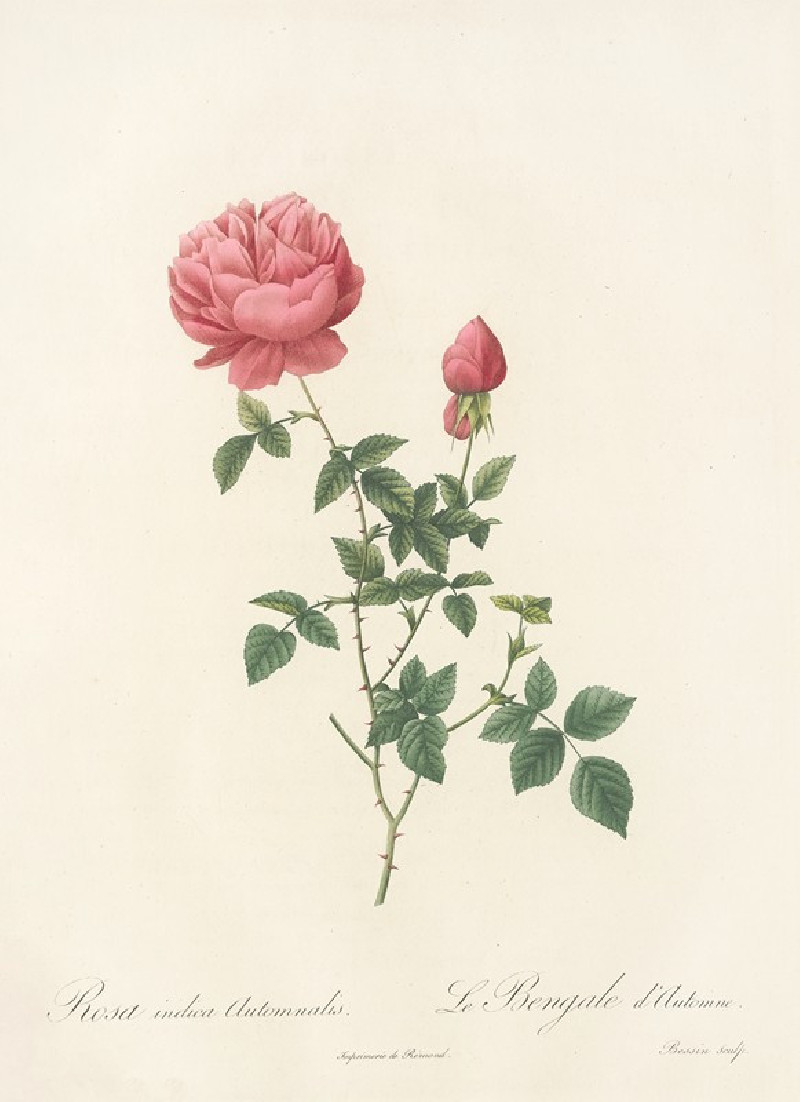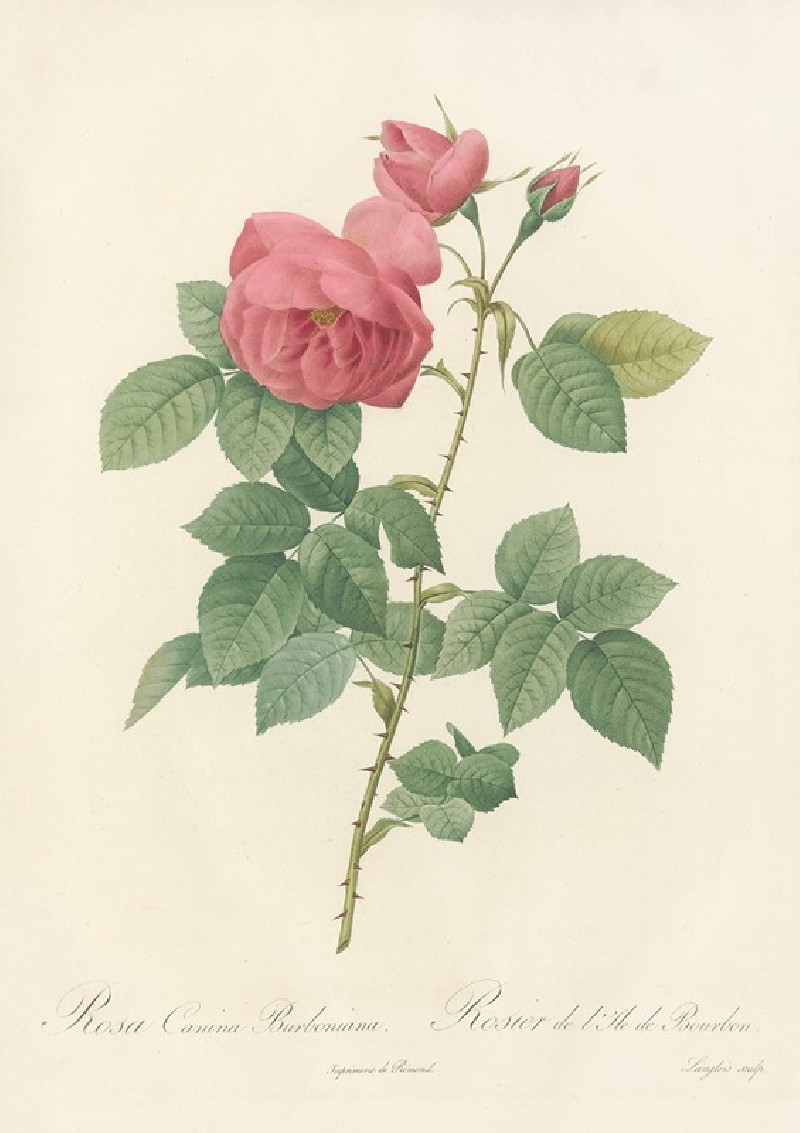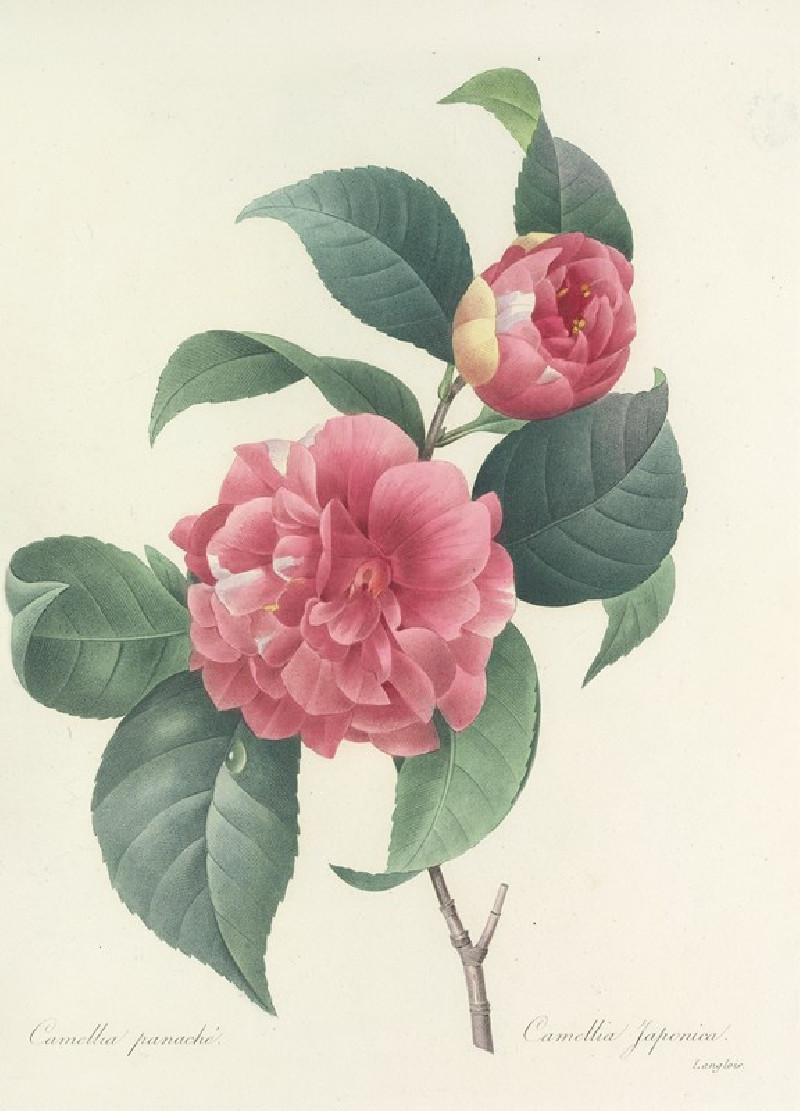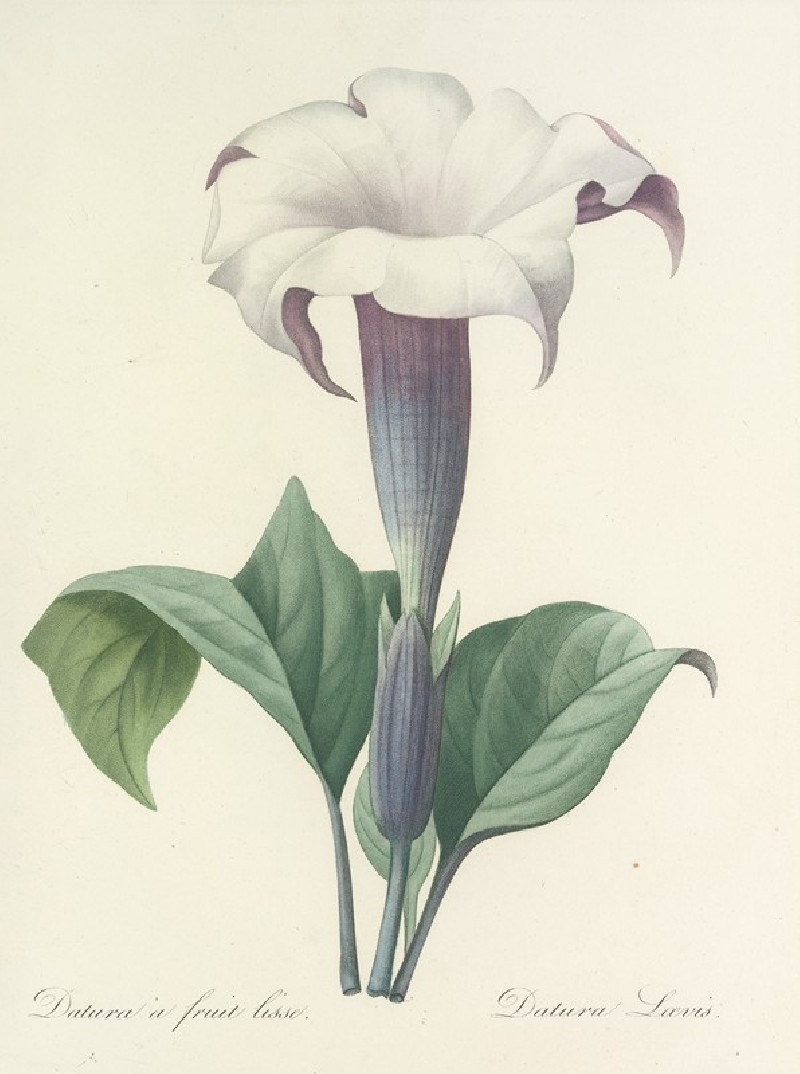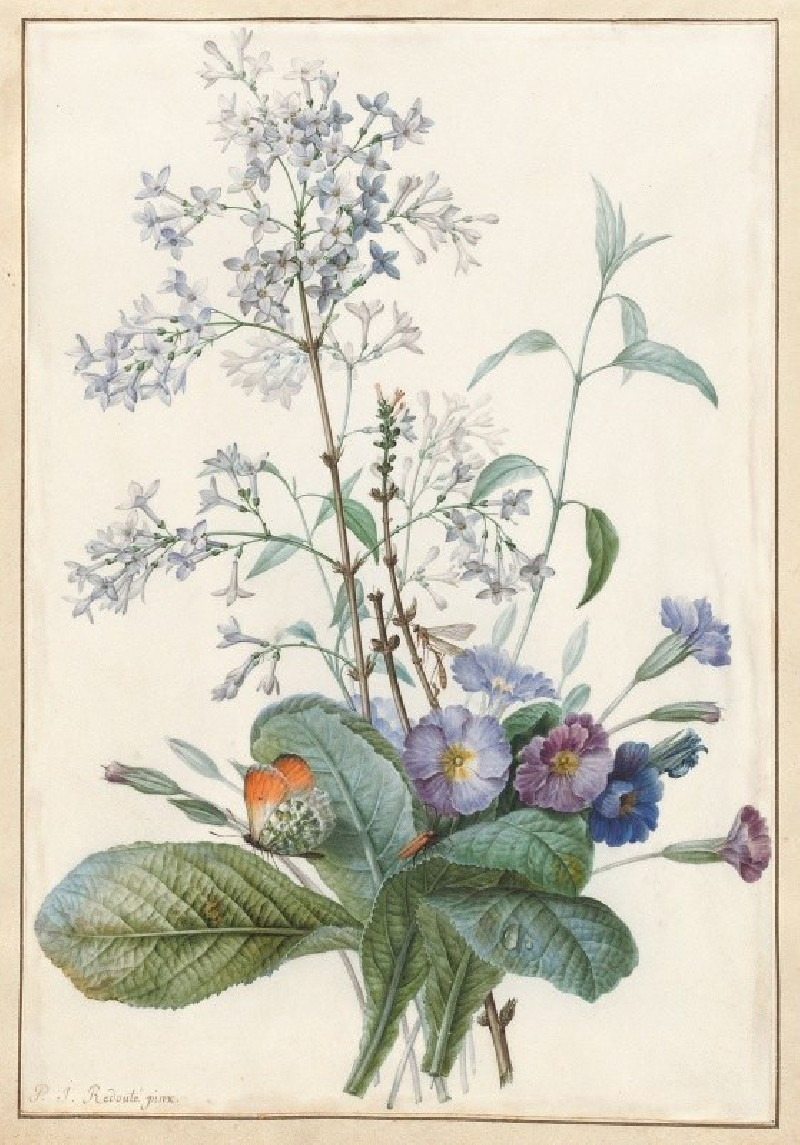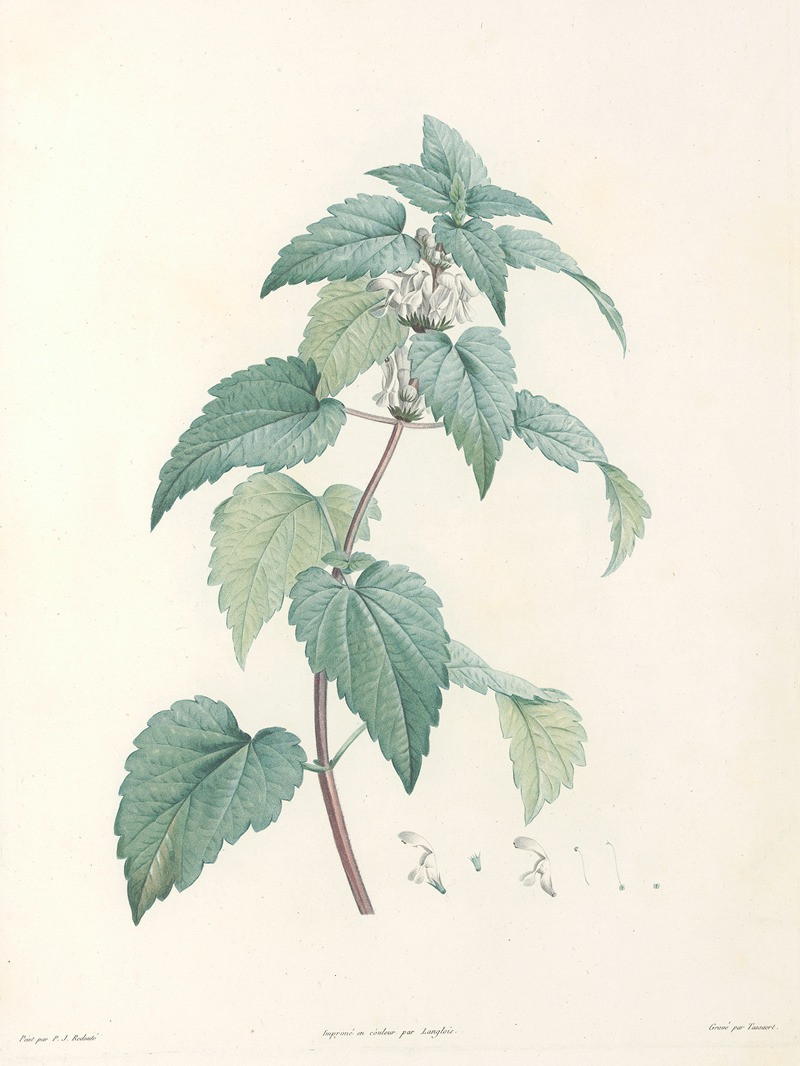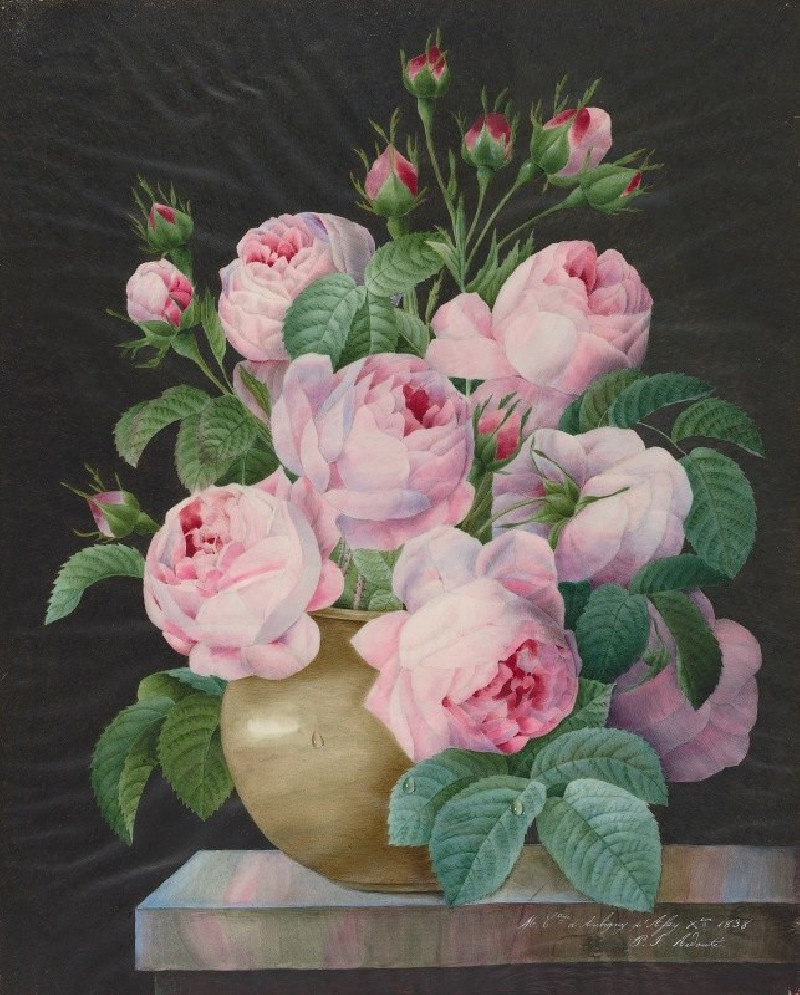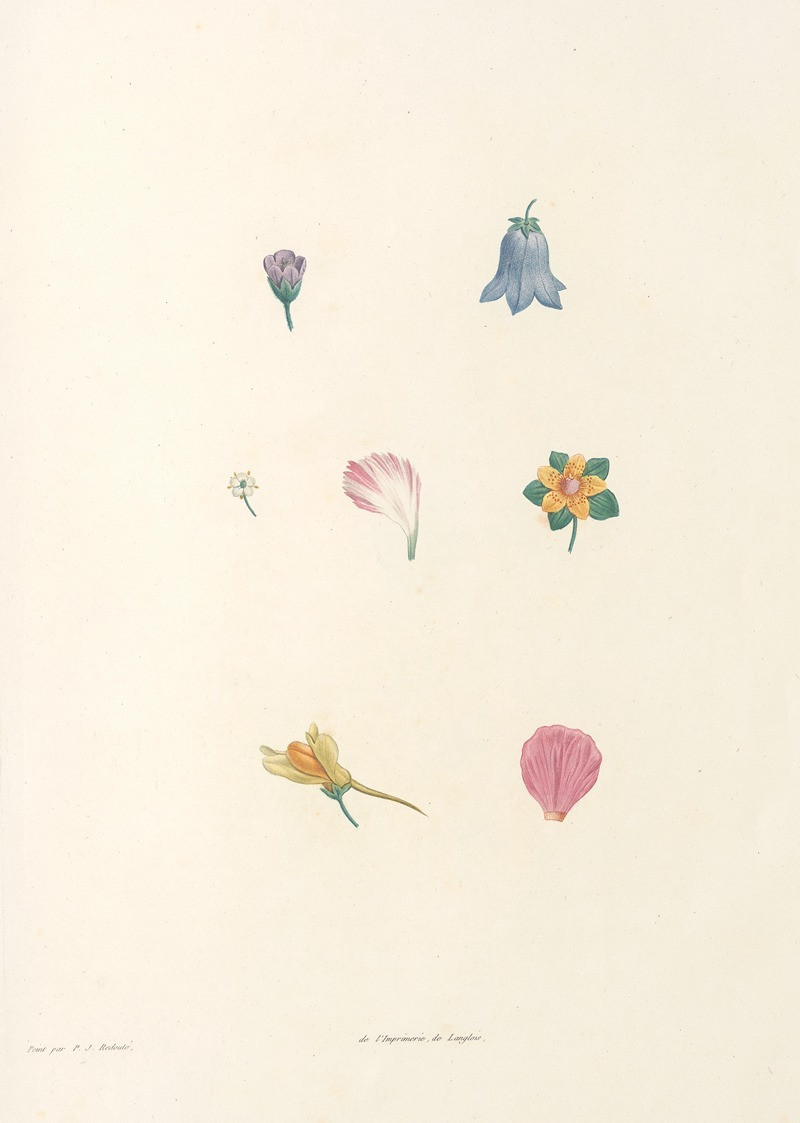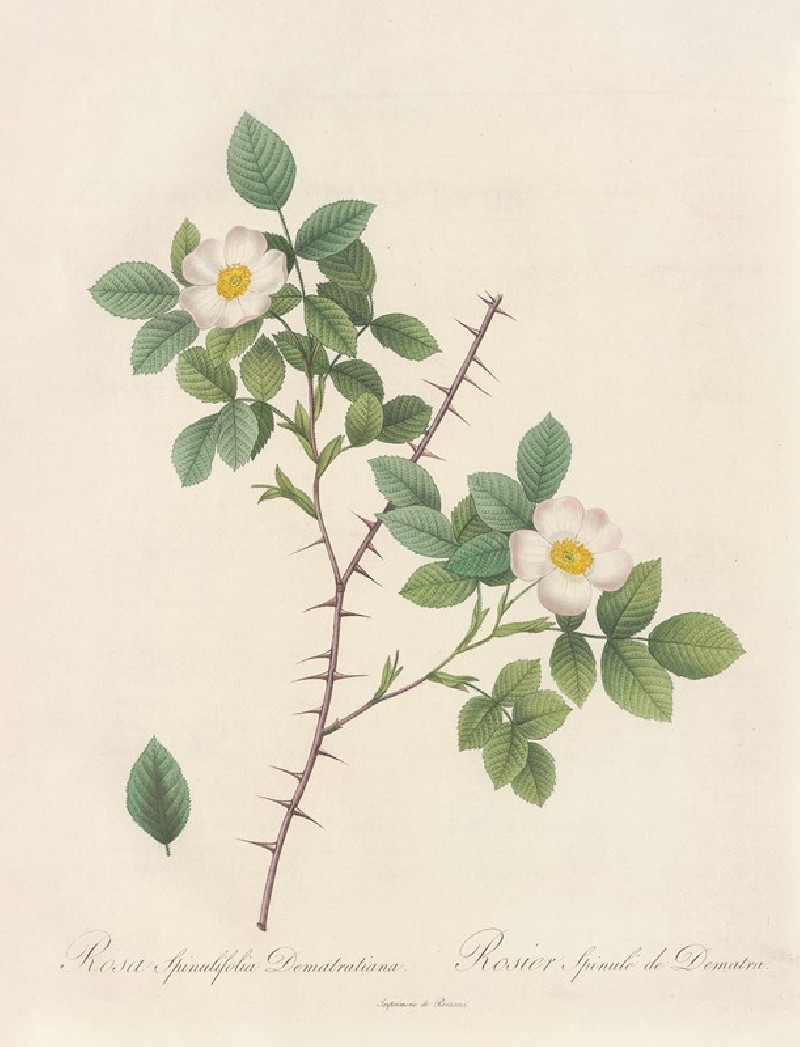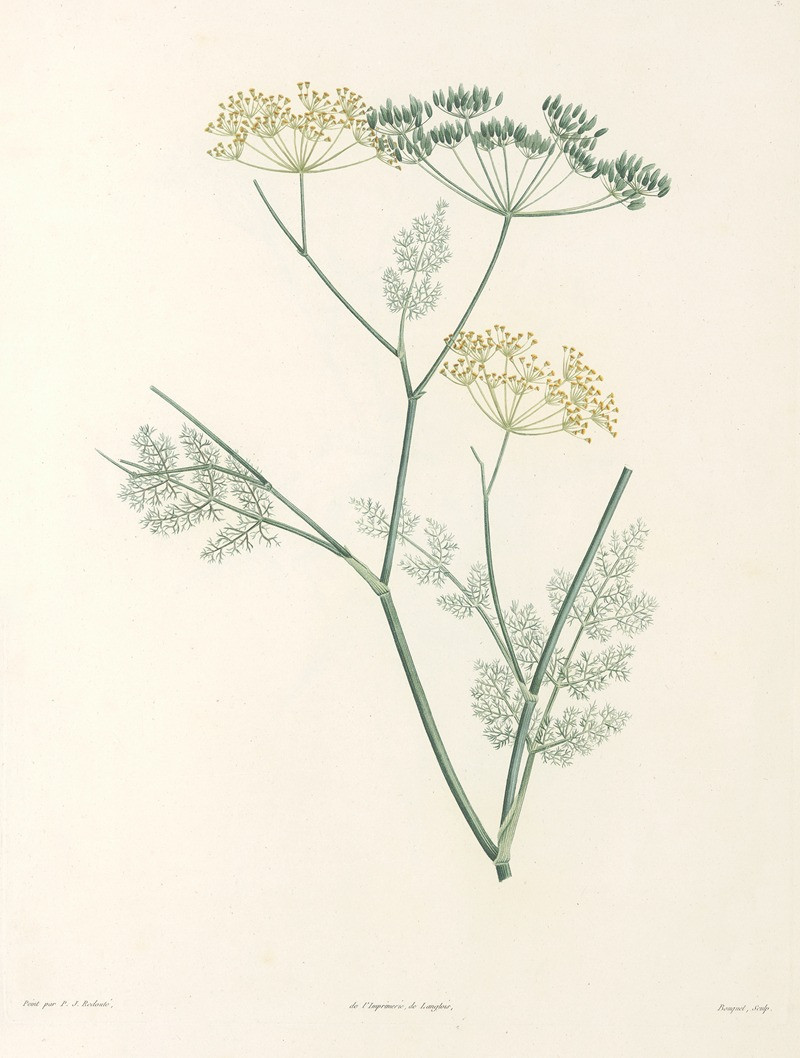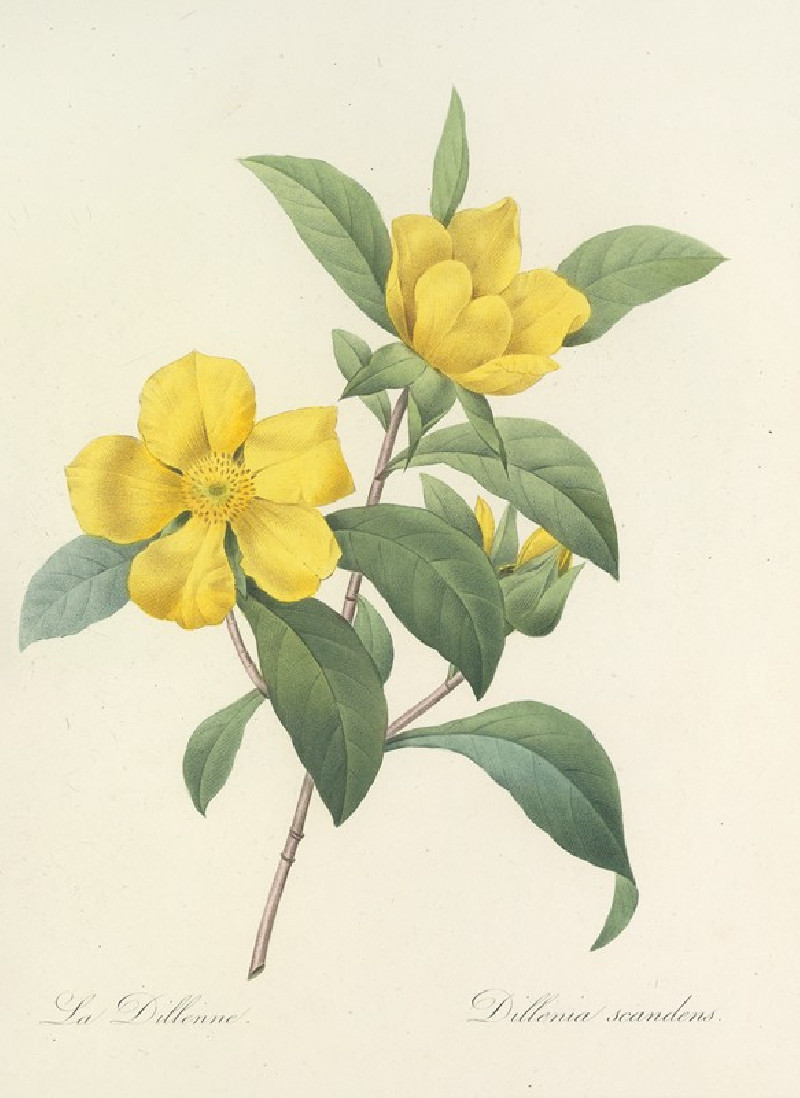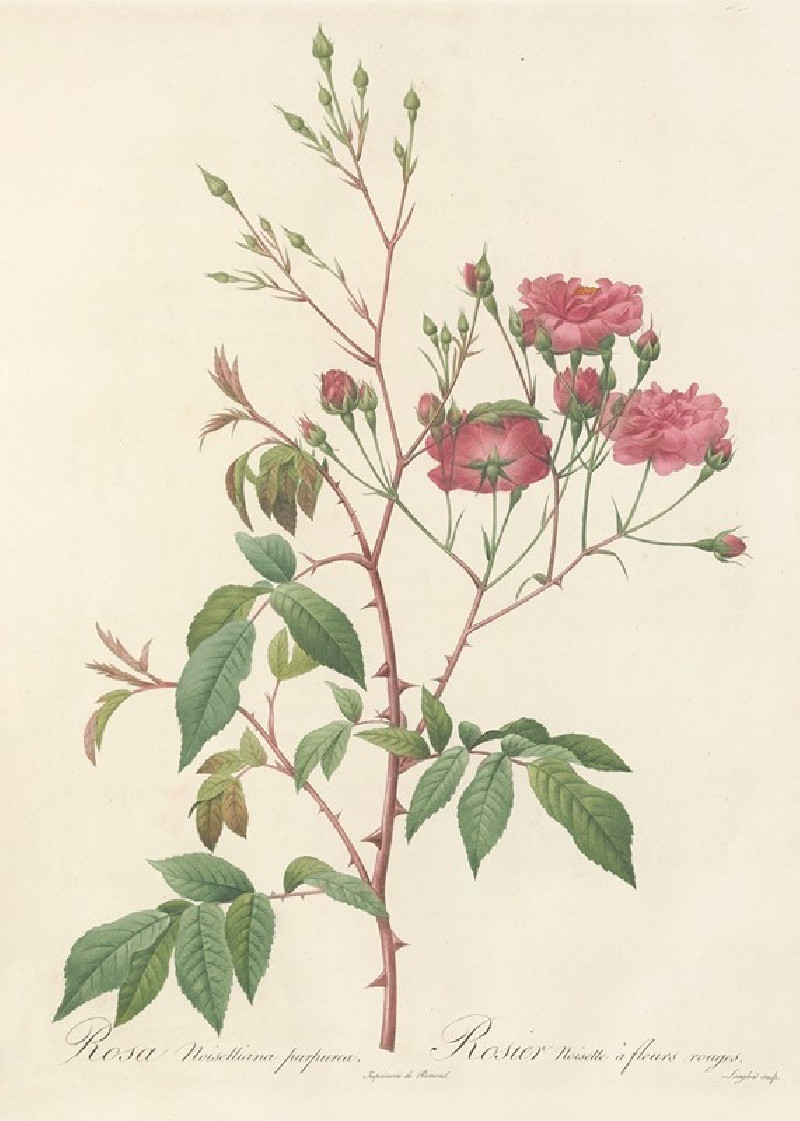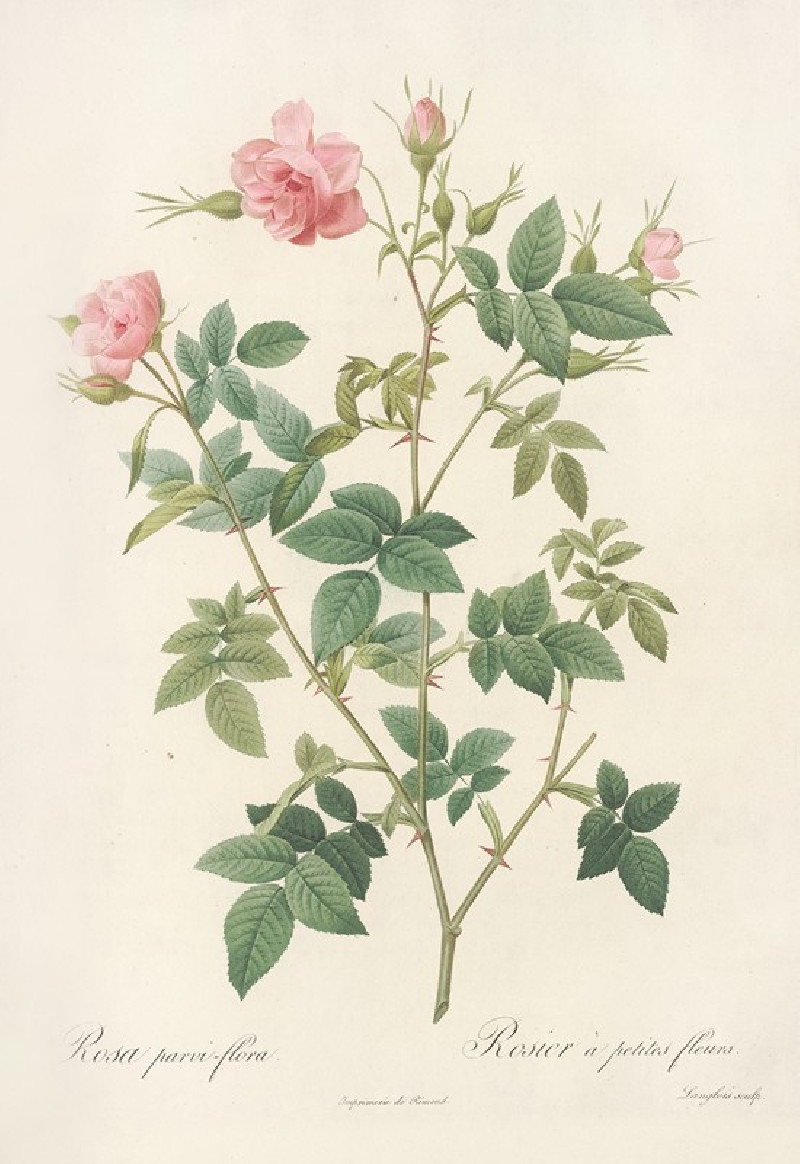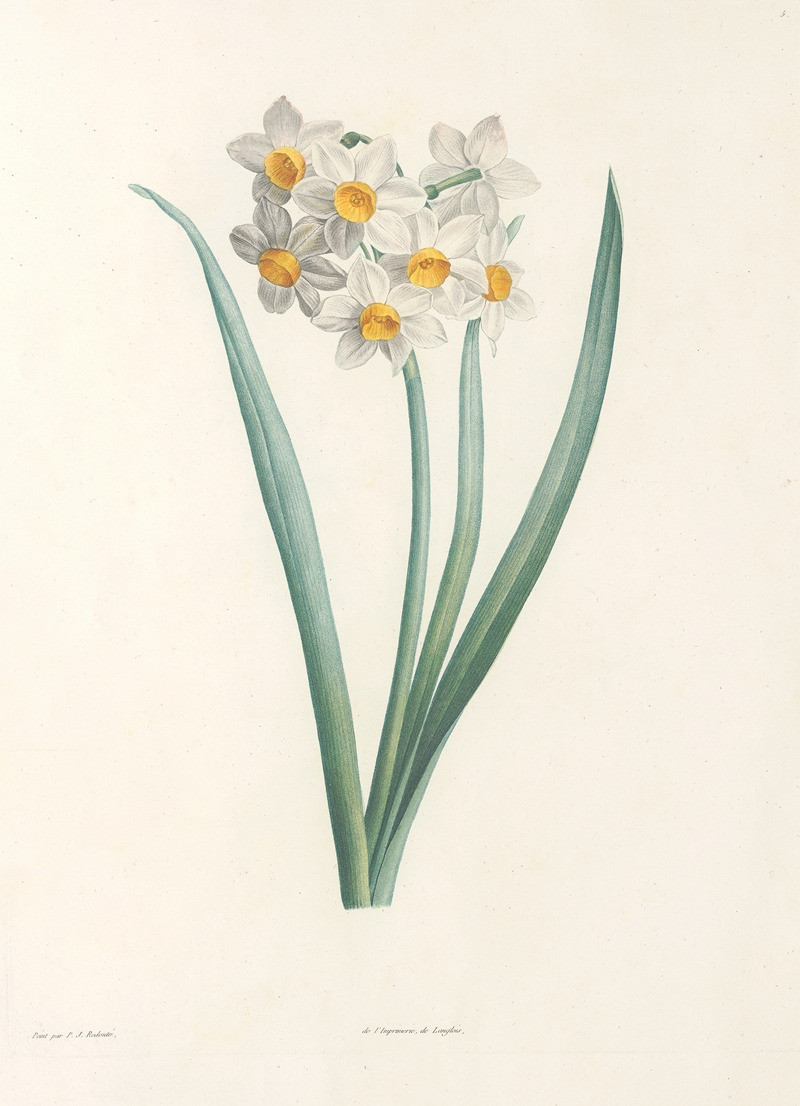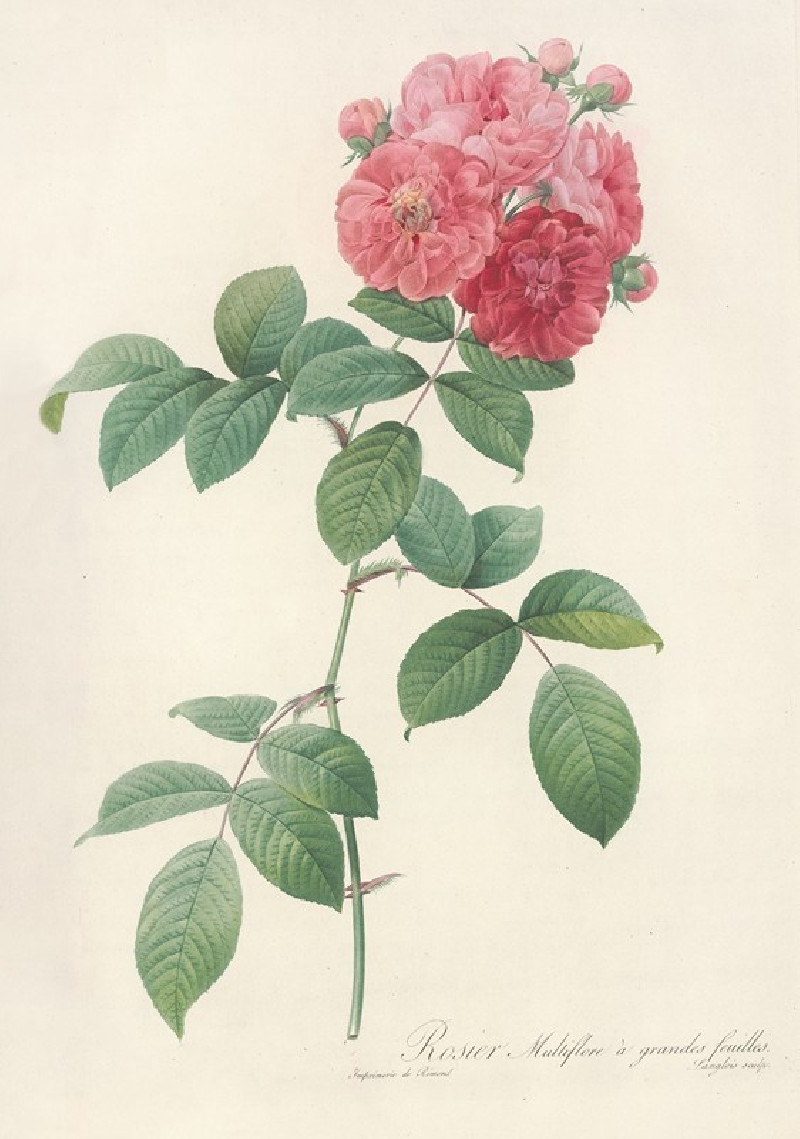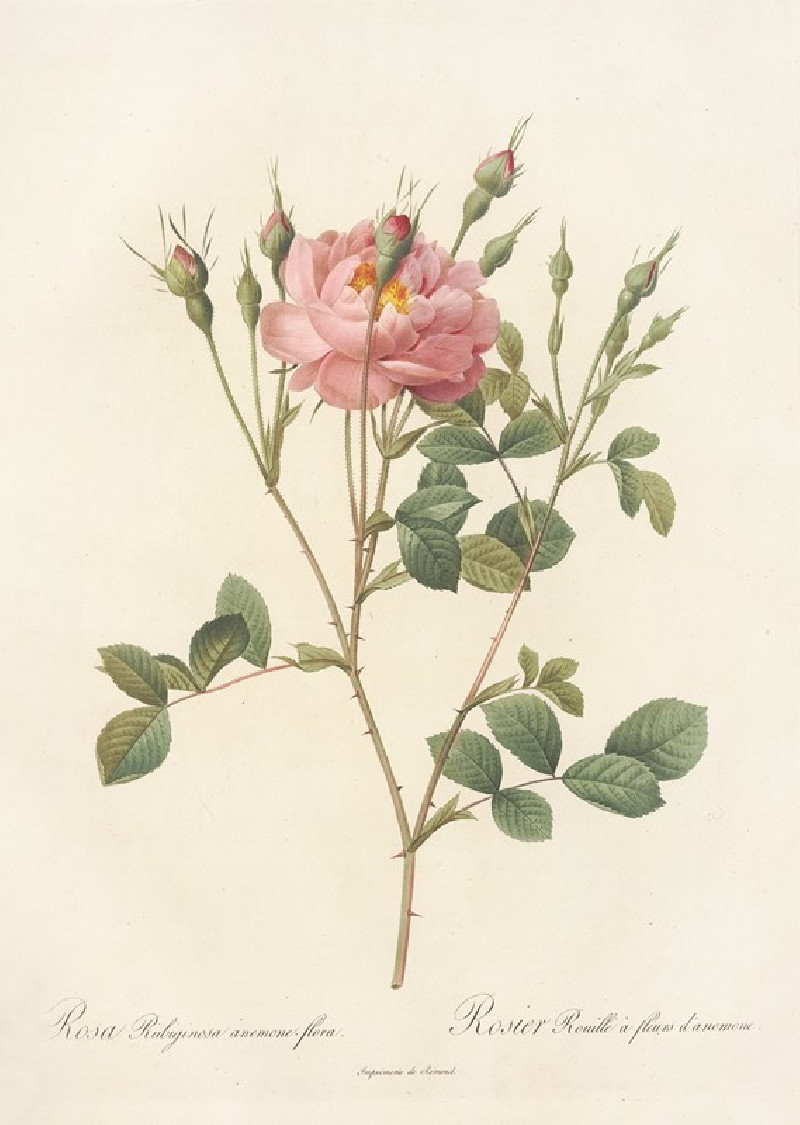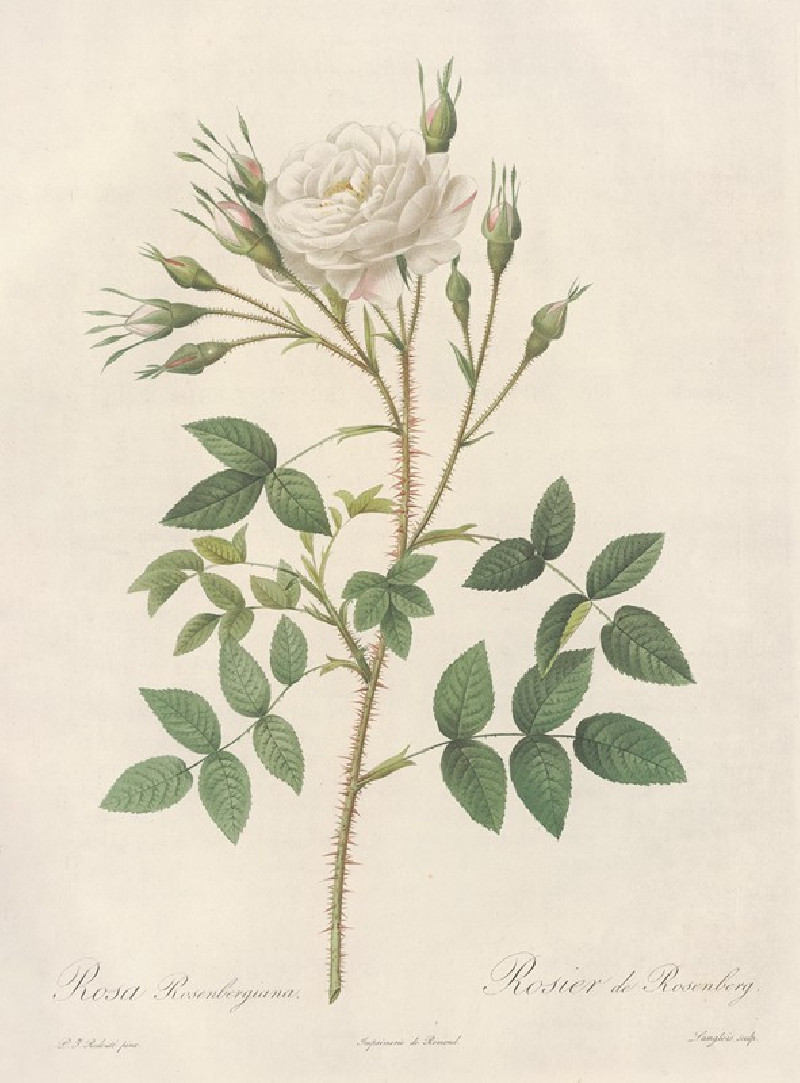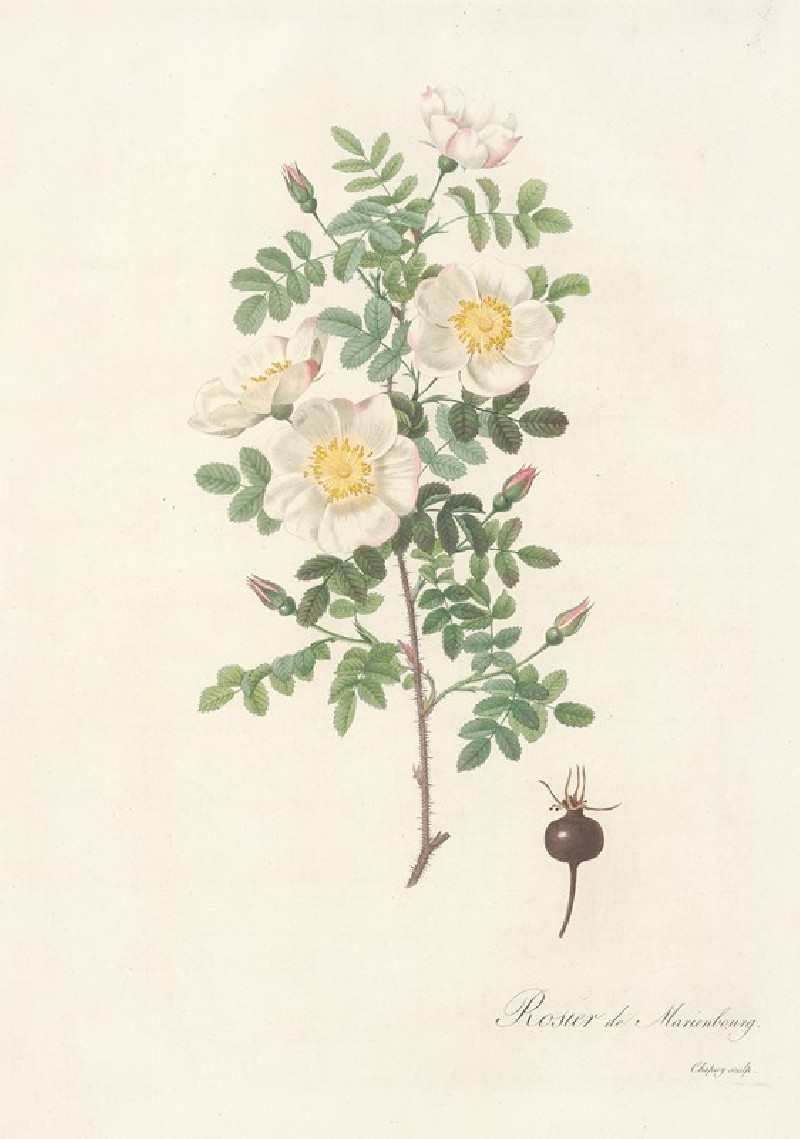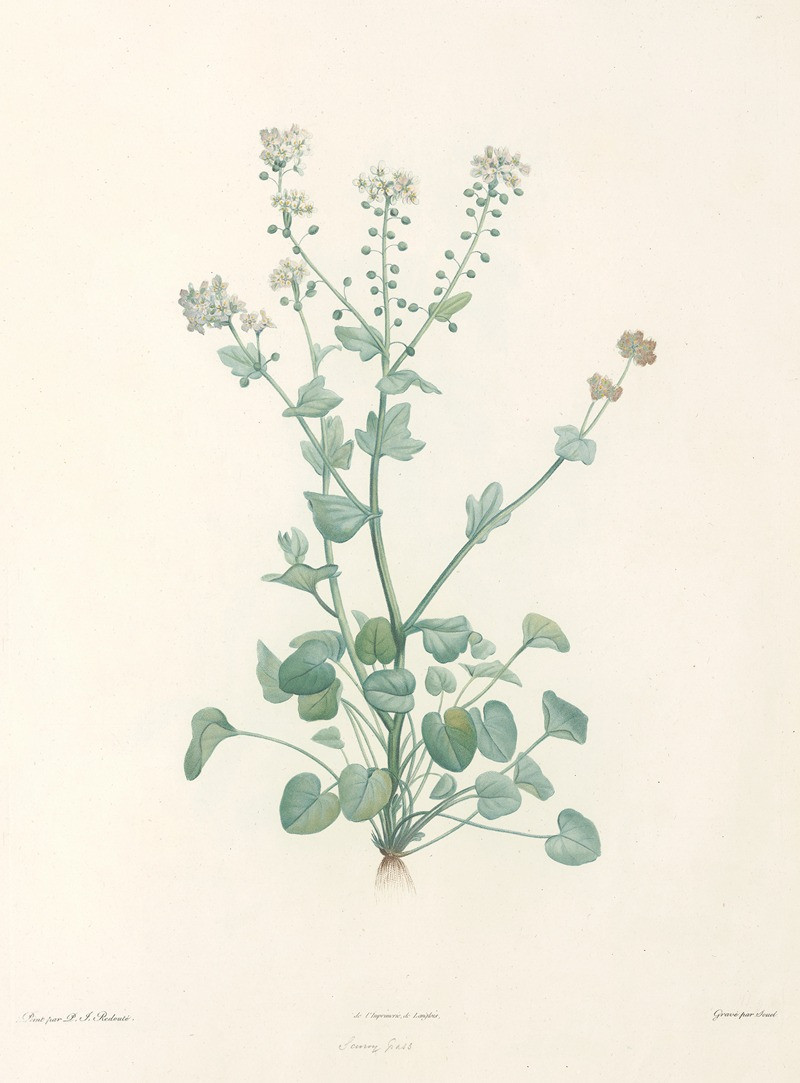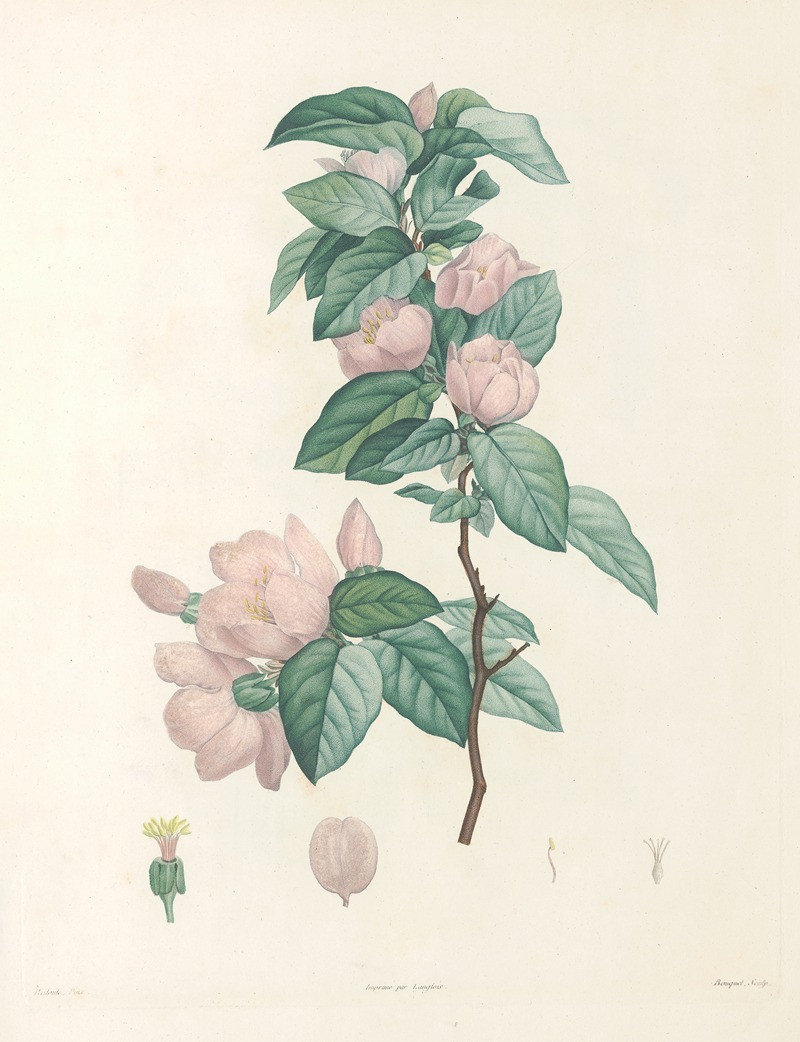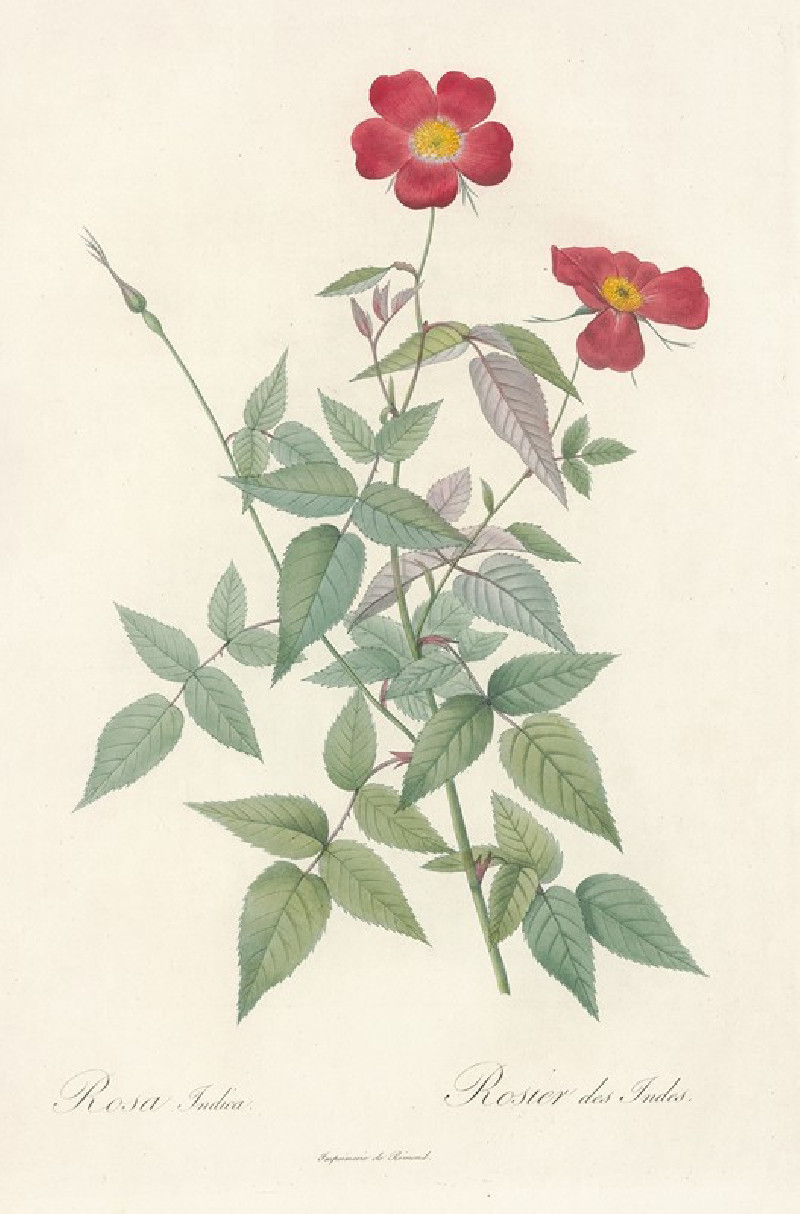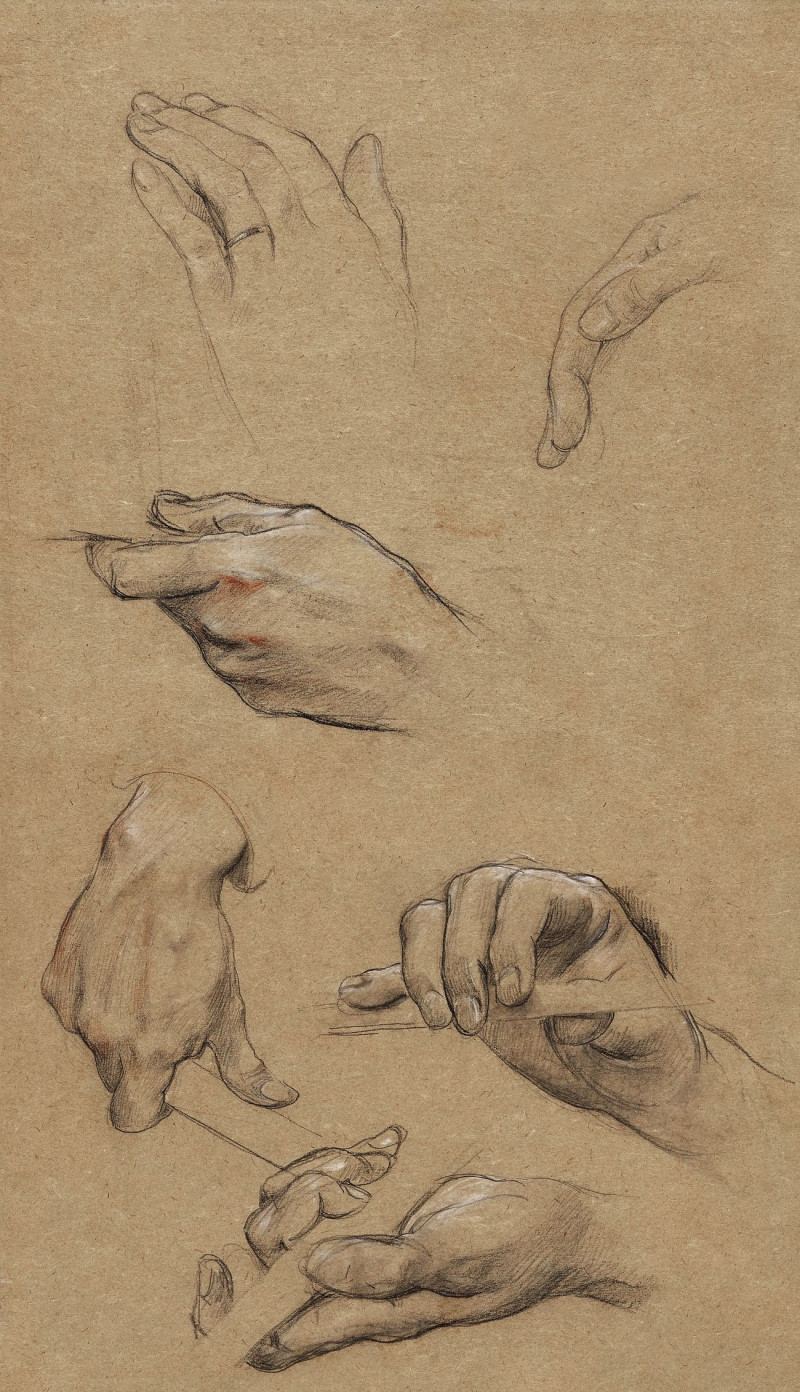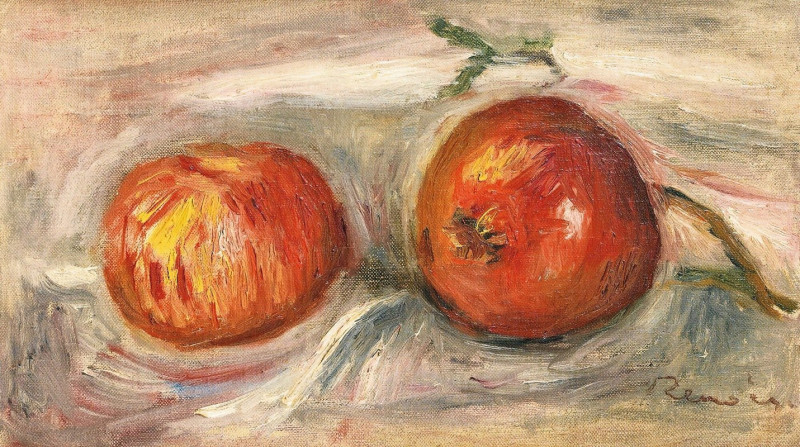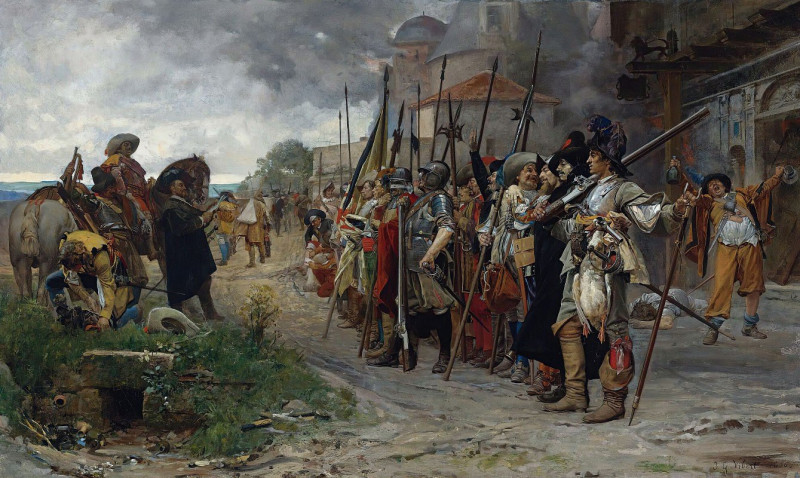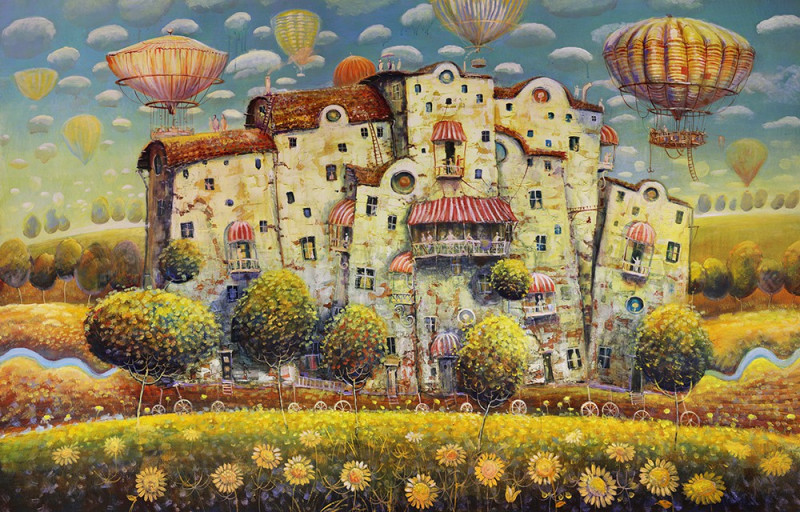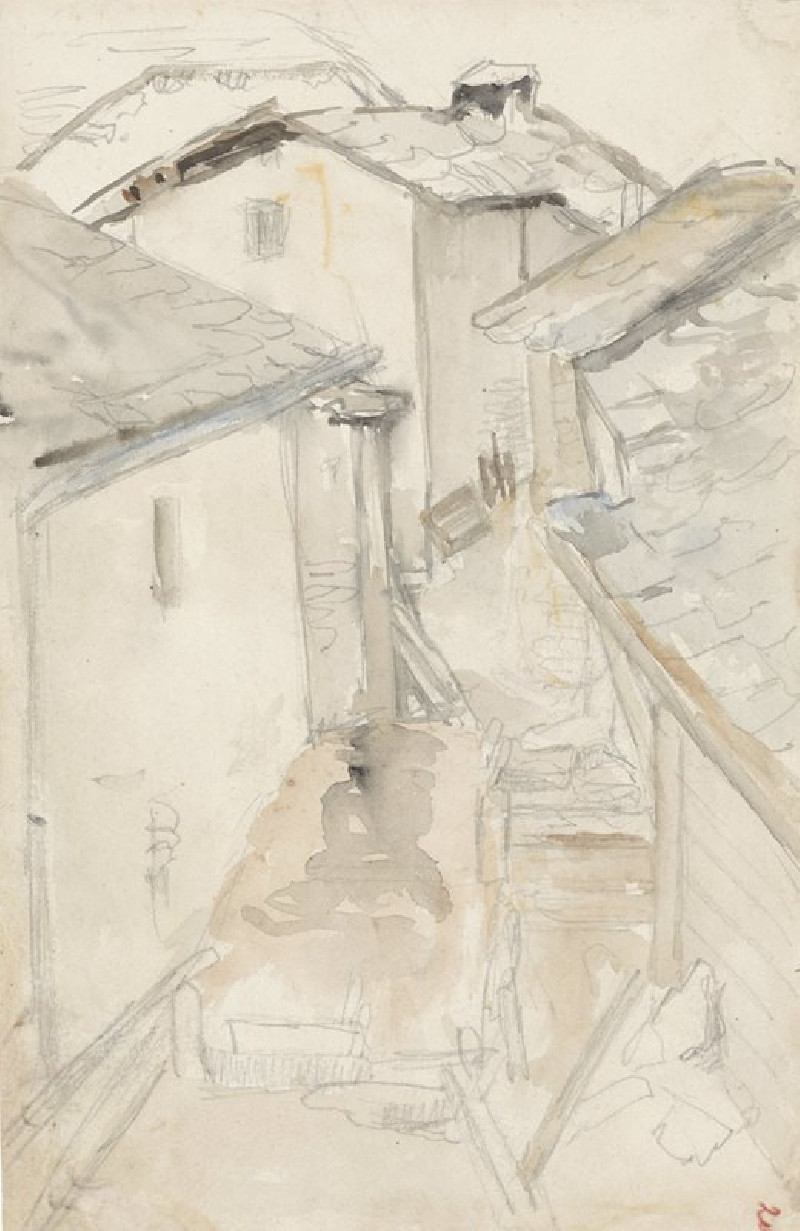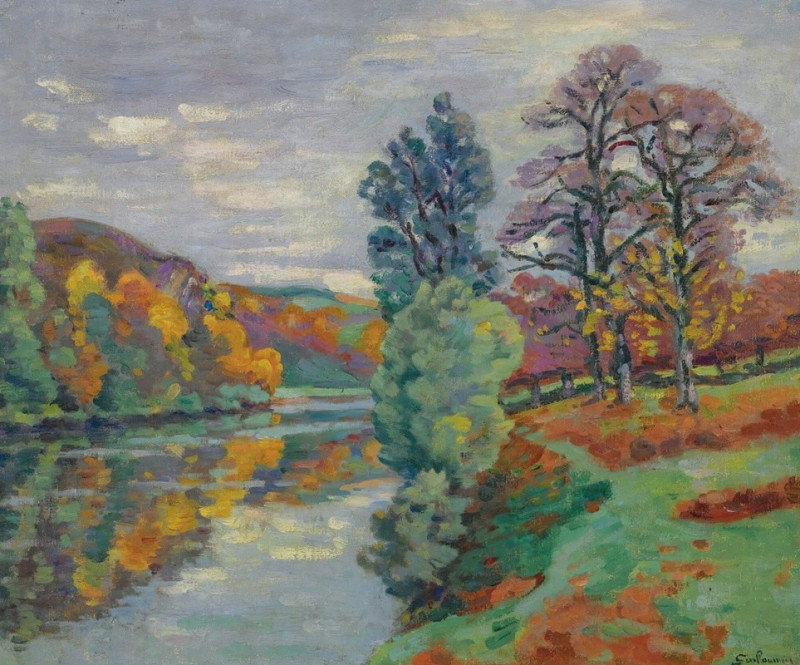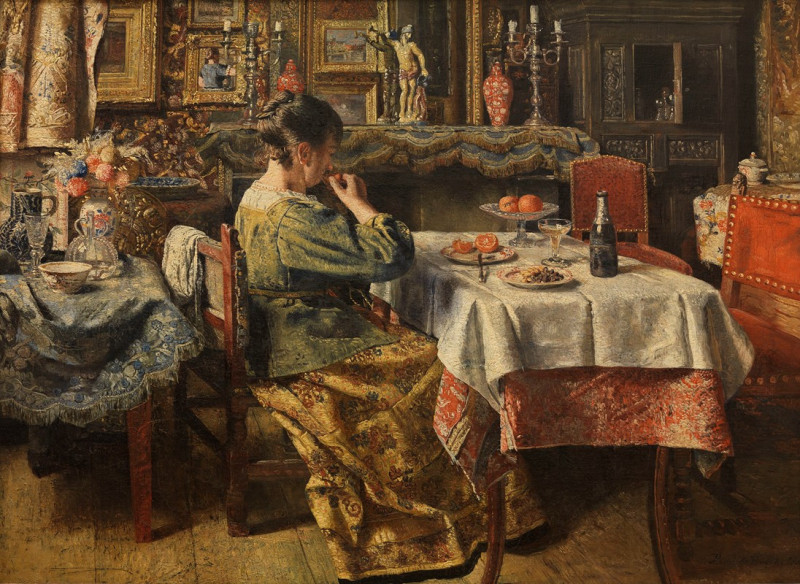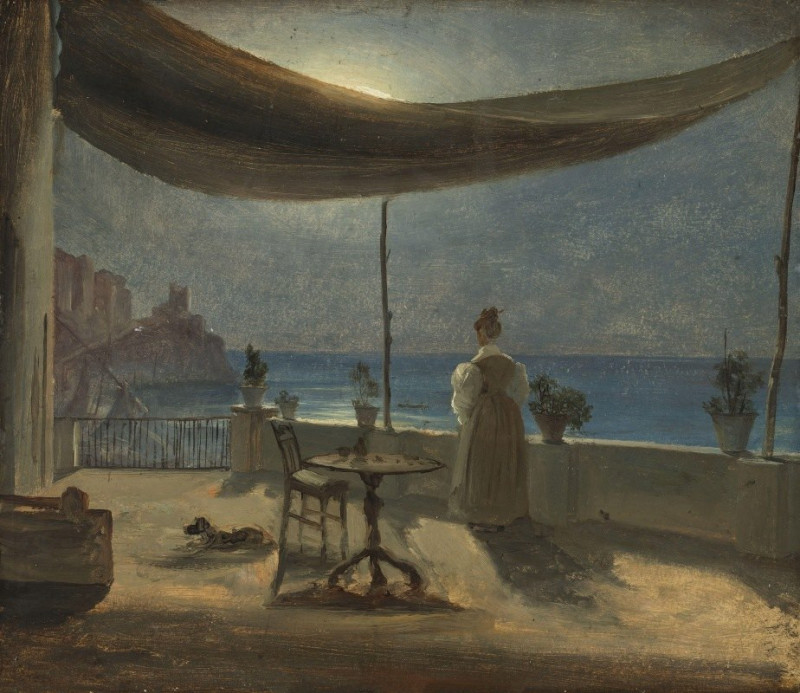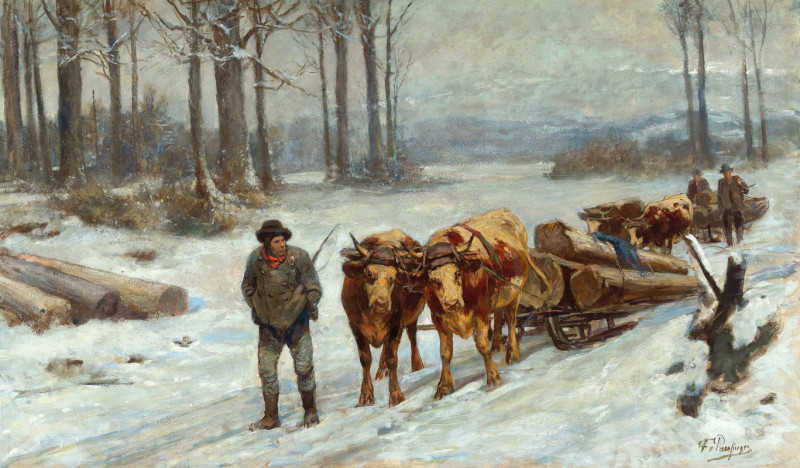Rosa Sepium Rosea (1817 - 1824)
Technique: Giclée quality print
Recommended by our customers
More about this artwork
In the enchanting depiction titled "Rosa Sepium Rosea," created between 1817 and 1824, Pierre Joseph Redouté, renowned for his masterful approach to botanical illustration, presents a realistic portrayal of a type of wild rose. This particular work showcases a delicate rose stem, beautifully adorned with both bloomed and budding flowers. The blossoms, portrayed with a subtle hue of pink, are complemented by the fine details of the yellow center and the stamen, which enhance the painting’s botanical accuracy.The background is unadorned and neutral, directing all attention to the vibrancy and intricate detail of the green leaves and the tender thorns that line the slender stem. Redouté’s technique commendably captures the gentle folds of the petals and the varied shades of green across the leaves, reflecting his meticulous observance of his floral subjects.This piece exemplifies Redouté’s contribution to both the art and science of his time, as it not only appeals aesthetically but also serves an educational purpose by providing accurate floral representations.
Delivery
Returns
Pierre-Joseph Redouté, was a painter and botanist from Belgium, known for his watercolours of roses, lilies and other flowers at Malmaison, many of which were published as large, color stipple engravings. He was nicknamed "the Raphael of flowers" and has been called the greatest botanical illustrator of all time.

